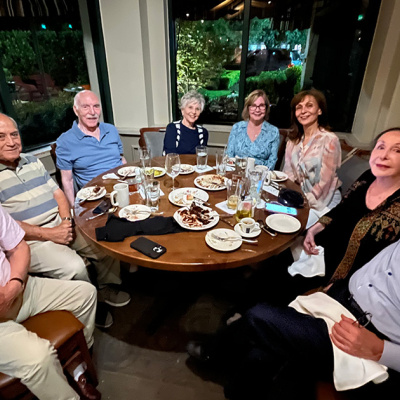After the Cold War's Thaw, UT Professor Uncovers Archaeological Treasure
How a UT researcher stumbled onto a hidden archaeological treasure and shared it with the world.

UT archaeology professor Joseph Carter's niche is excavating rural sites, learning more about ordinary people in the ancient world, such as farmers, and how their settlements in rural areas—known as "chora"—interacted with proximate towns and cities.
Early in his career, Carter had heard of an elusive place at the tip of the Crimean peninsula in southern Ukraine that was beautifully preserved and would offer rich evidence of Greek colonial life as well as the Roman and Byzantine cultures that succeeded it. The problem was the Cold War.
“I wanted to see Chersonesos with my own eyes, but it was located within one of the most secret zones on earth, near the Soviet naval installation at Sevastopol,” Carter says.
Although the Cold War ended in 1991 with the collapse of the Soviet Union, Sevastopol remained a closed city until the end of 1995. Carter knew he would have to be persistent and a bit lucky to get his foot in the door. A Russian scholar he met at a 1992 conference greased the wheels and helped Carter get permission to work at the site. His team would become the first foreign group ever given access to Chersonesos. Widespread lack of interest in the site was a blessing in disguise, Carter says.
“The shroud of secrecy actually helped to preserve the site,” Carter says. “Because the area was closed, it was also off-limits to developers.”
The condition of the site is also remarkable given the settlement’s long and turbulent history—countless raids by various tribes, conquest by two empires (Roman and Ottoman) and a battle site for three major wars beginning with the Crimean War of the 1850s. During World War I and the Russian Revolution, control of the area changed hands six times between Axis and Allied forces. According to Carter, the Crimean War and World War II in particular left “huge scars” on the city and territory.
“We found a lot of ammunition, some unexploded, on our site in the chora known as ‘no name hill,” he says.
Jessica Trelogan was one of the early members of the team who recalls the enormous amount of work that lay ahead. She first visited the site in 1996 as a graduate student in classical archeology, “fell in love with the place,” and began to learn Russian.
“It was magical and untouched,” she says, noting that few tools or maps were available to those who explored the site in earlier years.
When excavation wrapped up in 2006, the team started to do more active work on the heritage designation and preparing the site for visitors. An international exchange was set up with UT's Harry Ransom Center to assist archivists in Ukraine with the care of document collections. Students from UT’s Landscape Architecture program also assisted in developing plans for an archeological park.
Now, thanks to the work of Carter's team and colleagues, Chersonesos has been granted the coveted status of a UNESCO World Heritage Site. The status will help protect the site and aid research for years to come.
“Chersonesos commands our respect because of its very important place in world history, as the birthplace of democracy in this part of the world, and of Christianity in the Slavic world,” Carter says. “Few places on Earth have such a long and vital history.”






